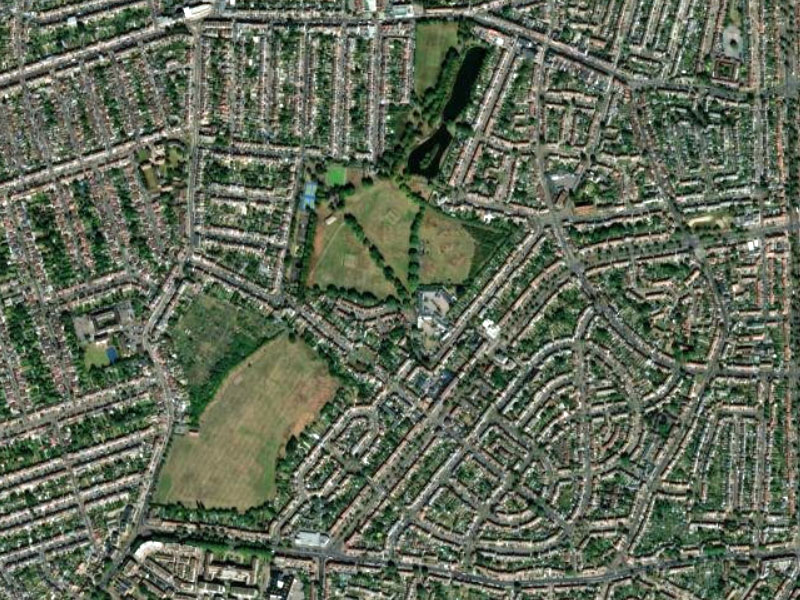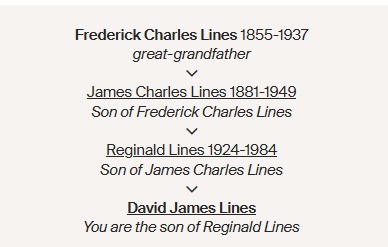Frederick Charles Lines, my great-grandfather, was born on 2 March 1855, probably at Goodmayes Lane, Ilford. Census data from 1861 indicate that his parents were living there.
In the early 19th century, Goodmayes Lane in Ilford was a rural area surrounded by farmland. Goodmayes mainly remained undeveloped until the end of the 19th century. Large-scale suburban development began in the late 1800s as London expanded. Most of the area was developed between 1898 and 1910, with the construction of new railway stations fueling growth. Goodmayes Lane was part of the Valence House Estate, a large family home located to the east, which also included Goodmayes Farm. Frederick’s father was likely a worker on the estate and, according to the 1871 census, worked as a gardener.
In 1866, Frederick’s mother, father, sister Harriet, and brother Alfred died of cholera. Frederick’s younger brother William and sister Elizabeth, were taken into care at the Ashley Down orphanage in Bristol. It is unclear where Frederick (11) and his brother James (9) went when their two siblings were taken into care.
The 1866 cholera outbreak in London was the last major outbreak and was concentrated in the East End, where areas were not yet connected to the new sewer system. Residents in this area were drinking water from the contaminated Old Ford Reservoir. The epidemic resulted in 5,596 deaths, with a high concentration of fatalities in the East End.
On 27 November 1876, at age 21, Frederick married Hannah Matilda Brazier. In 1881, they lived at 12 Giraud Street, next door to Hannah’s parents, with their sons Frederick (3) and William (11 months). He was employed as a mast maker’s labourer. In the 19th century, mast makers were a significant part of the industrial landscape on the Isle of Dogs, particularly in the Millwall area, which became a hub for shipbuilding and related industries following the opening of the West India Docks.
In 1891, now employed as a Hammerman (blacksmith), Frederick was living at 28 Church Street with his wife, Hannah (35), sons Frederick (13), William (10), James (9), Charles (7), and daughters Elizabeth (5) and Hannah (3). By 1901, Frederick and Hannah had moved to 75 Percy Road, West Ham. With all four sons employed and living at home, life was likely a little easier for the family.
Frederick’s wife, Hannah, had a difficult life from her early years in London’s East End, and she died at the young age of 48. Frederick remarried soon after, to Agnes Sarah Parkinson in April 1905. In 1911, they moved to 6 Liverpool Terrace with their son Ernest (4) and Agnes’s children, Frank (20), Herbert (17), and Victor (14), from her previous marriage.
At 65, Frederick was still working as a Hammerman for Burdikck and Co. in Victoria Dock and living on Ripple Road, Barking with his wife and children. This house is still there today. He remained there until Agnes died in June 1935, at which point he moved to Camberwell.
His home in Camberwell is interesting, being five and a half blocks of tenements financed by philanthropist Samuel Lewis. The Samuel Lewis Trust Dwellings are housing estates built by the Samuel Lewis Housing Trust, founded in 1905. The Trust was established to provide affordable, good-quality housing for people on low incomes.
Shortly before he died in 1936, Frederick moved to Southampton, where he lived with his son, James.




Comments are closed